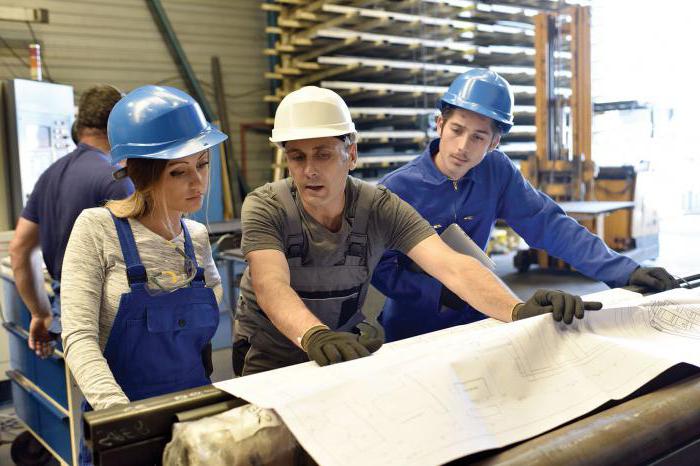The Labor Code establishes that each employer in the process of hiring a new employee must conduct initial training with him at the workplace. Why is this needed? Let's figure it out.
The purpose of the first outreach conversations
The briefing is carried out in order to ensure the life and health of each employee of the enterprise and organization. Indeed, the value of human life is taken care of by labor protection. Initial briefing at the workplace will help the new employee to feel safe and proceed with the new conditions of work for him without fear and in complete confidence that everything will be fine.
All requirements in this area, enshrined in law, are aimed specifically at minimizing the risks of life-threatening or unforeseen traumatic hazards.
Who is being trained?
Initial briefing at the workplace must be carried out with each person who joins the new team. Workers are divided into the following groups:
- Workers hired for temporary work. This includes temporary work related, for example, to harvesting vegetables and fields.
- Combinators.
- Workers who do not participate in the production process at the enterprise, but work from home, but at the same time use equipment allocated to them by the employer.
- Workers who arrived at production from another structural unit of the enterprise.
- Students doing internships at the enterprise.
- Employees who arrived at the enterprise on a business trip.
- Other workers directly involved in the production process.

What order should the employer observe when employees do not undergo primary training?
Persons who do not participate in the production process may refuse to provide initial briefing at the workplace. They do not use materials, raw materials and equipment.
At the same time, the employer must approve the list of these positions and professions. It is supported by a regulation or order signed by the direct supervisor of the production. The document must have a date and number to account for it in the production documentation.
Many employers are wondering whether it is necessary to conduct training at the workplace with office workers who use only office equipment. Of course, it is necessary, it can be explanatory conversations about safety rules at a computer or about using electrical appliances that are always present in the office (electric kettles).
Nevertheless, those managers who consider that this is not necessary should make a request to the state labor inspectorate on this issue and draw the appropriate conclusions based on the response received.

Who is responsible for the briefing?
Responsibility for the safety of their team lies with the immediate leaders in the field. It is they who are responsible for ensuring that all newly hired employees undergo initial training at the workplace.
In order for the leader to have the opportunity to conduct it, he must learn safety at work. Crowds of training are issued for a period of three years. The course is designed for 40 hours.
The training is conducted by specialized training counseling centers or a commission created at the enterprise itself.
If the training is carried out at a training center, then it is necessary to check the availability of a license to conduct educational work, apply, and you can train not just one leader, but other members of the work team at once. After passing the training and paying for it, the head receives a certificate of this.
With regard to training within the organization, it must be remembered that the commission created to conduct the training must be trained on its own.
How is the training at the enterprise?
As has already been said, the commission is created by a commission made up of specialists who themselves were trained in a specialized training center.
She develops a primary training program at the workplace, compiles lecture material and prepares tickets for testing knowledge.
The direction for training is made out by the order or the resolution of the enterprise. After passing it successfully and passing the exam, the employer or specialist receives a certificate that gives them the right to carry out initial briefings at the workplace.

Where can I find funds for training members of the commission?
As you know, to get training at a specialized training center, you must pay for it.
You can write a statement to the social insurance fund with a request to allocate funds to finance preventive measures that will be aimed at reducing the level of occupational injuries.
It must be submitted no later than the first of August. It should be remembered that the amount provided will depend on the amount of taxes paid to the appropriate budget for the prevention of unforeseen cases leading to injuries in the workplace.
After receiving the money, it will be necessary to report to the fund on their use.

Briefing Procedure
After the basics of his work have been explained to a new employee, they proceed to more specific explanations.
Conversations are conducted on specially designed programs. At the same time, at each production site, it is its own and is a plan for initial instruction at the workplace. Sample program:
- General information about the production and workplace of the beginner as a whole.
- Description of the harmful factors that may occur in the workplace.
- Areas of equipment or machinery that could be harmful to humans.
- Necessary rules for preparing the working area (starting up the equipment and checking for safety).
- Measures to be taken by the employee during a dangerous situation.
- Familiarity with personal protective equipment.
- Actions of employees during emergency situations, fires and other factors of natural or man-made impact.
The instructions tell the newcomer how he should behave before, during and after work. And also they contain a variety of unforeseen cases that arise during the production process and rules of conduct when they occur.
All instructions are agreed with representatives of the trade union organization. They are published for a period of five years, after which they are reviewed and reapproved.
At the same time, primary instruction at the workplace on labor protection can be carried out not only orally, but also use presentation materials and video materials for this.

Results of the briefing
After the briefing is carried out, it is necessary to do a knowledge check with a new employee. He talks about them verbally or in writing. After that, the result is recorded in a special register of primary training.
The form of the magazine can be found in legislatively fixed regulatory documents. Sheets of the magazine are numbered, stitched and sealed. After checking, the journal is signed not only by the instructor, but also by the beginner.
If the employee does not undergo instruction, then he is not allowed to work, and an order is issued that indicates the date of the new instruction. During the specified downtime, wages are not paid.
What is an internship?
After the briefing is carried out, the employee proceeds to his official duties, but if his production is among the harmful, then he initially undergoes an internship.
During her, he learns how to conduct production correctly and how to use personal protective equipment. A mentor is assigned to him.
The internship is also issued by order or order, which indicates the period of its passage. After a successful graduation, a beginner is allowed to work independently.
Data on internships are also recorded in the training journal.
The second briefing, which is recorded in the same journal, is carried out no later than one year after passing the previous one.

What threatens the refusal to carry out explanatory instructions?
Punitive measures. A fine of up to 25 thousand rubles is imposed on an official. For an organization, this is from 110 to 130 thousand rubles.
The state inspectorate can identify the fact of non-briefing. This occurs during the investigation of unforeseen situations leading to injuries, during the verification of labor protection documentation in accordance with the inspection plan or on the basis of a complaint from production workers.